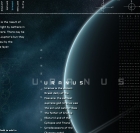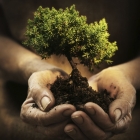-
Analysis+22 +1
There's a library on the moon now. It might last billions of years.
From 'Dune' to Dogecoin, the first true backup of human civilization contains a few surprises.
-
 +31 +1
+31 +1Lunar Codex: digitised works of 30,000 artists to be archived on moon
Collection to include images, objects, magazines, books, podcasts, movies and music from 157 countries
-
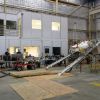 +21 +1
+21 +1NASA's quirky new lunar rover will be the first to cruise the moon's south pole
It’s no simple feat to send a rover to space, land it on a celestial body, and get the wheels rolling. NASA has used all kinds of techniques: The Pathfinder rover landed on Mars in 1997 inside a cluster of airbags, then rolled down its landing vehicle’s “petals,” which bloomed open like a flower, to the dusty surface. Cables attached to a rocket-powered “sky crane” spacecraft dropped the Perseverance Mars rover to the Red Planet’s surface in 2021.
-
 +29 +1
+29 +1Buck full supermoon illuminates skies around the world – video
The first supermoon of 2023 is named after the antlers of male deers which are growing at this time of year
-
 +12 +1
+12 +1Just How Super Is The Coming Supermoon?
July's full moon will be thousands of miles closer to us than usual. Learn how to measure it with your hand.
-
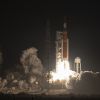 +18 +1
+18 +1NASA aims to perform lunar mining trial within 10 years
NASA's Artemis missions and its upcoming lunar Gateway station project are part of its plans to establish a permanent presence on the Moon. Key to that will be the extraction of resources from the lunar surface, and NASA has already taken important steps toward mining moon soil by 2032, a scientist said today, June 28, according to a Reuters report.
-
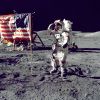 +20 +1
+20 +1NASA claims that life can exist on the Moon. It is reportedly not unrealistic.
The Space website brings news about what scientists will be investigating during the upcoming journey to the Moon. NASA. According to these findings, certain forms of life could potentially sustain themselves in the lunar conditions. One of the scientists, named Prabal Saxena, provides detailed explanations.
-
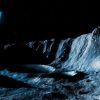 +20 +1
+20 +1Can NASA's Artemis moon missions count on using lunar water ice?
We are on the cusp of learning far more about the projected icy situation of the moon's permanently shadowed regions, or PSRs. Multiple nations are eying the moon's south pole with research teams plotting out how and where to explore the bottoms of the sun-shy features.
-
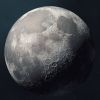 +4 +1
+4 +1Scientists discover gigantic 'structure' under the surface of the Moon
The Moon has been a subject of awe and fascination for millennia, with its shape-shifting powers and enigmatic dark side.And though it’s the one celestial body on which man has taken (small) steps, we still have big leaps to go in understanding its potential and uncovering its secrets.However, one h...
-
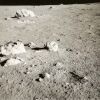 +16 +1
+16 +1Here’s All the Rocks We Hauled Back From the Moon
The 12 human beings who walked on the Moon collected, catalogued and returned 842 pounds of lunar rock and soil. Each sample has been meticulously documented in NASA's Lunar Sample Catalog.
-
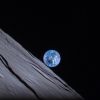 +17 +1
+17 +1Days before dying, Japan's lunar lander snaps glorious photo of Earth during a total solar eclipse
Japan's Hakuto-R lander may have crashed on the moon, but the spacecraft still sent back valuable images.
-
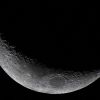 +19 +1
+19 +1The moon could have up to 297 billion tons of water stored in tiny glass beads on its surface, scientists say
Glass beads on the moon's surface may contain nearly 300 billion tons of water, which could provide a way for astronauts on future lunar missions to get water in space, a team of 28 scientists says. Prior research in the last decades has shown that there is water on the moon. But a new study published on Monday in the Nature Geoscience journal gives insight into how humans might be able to find and harvest that water.
-
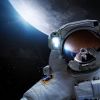 +4 +1
+4 +1NASA to name Artemis 2 crew next week, the first moon astronauts in 50 years
We're a week away from a once-in-a-generation announcement: The names of the first moonbound astronauts in decades. On April 3, NASA and the Canadian Space Agency (CSA) will together showcase the three Americans and one Canadian that will go to the moon on Artemis 2, which will launch no sooner than November 2024. The quartet will loop around the moon during the first-ever human lunar mission since the landing of Apollo 17 in December 1972.
-
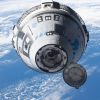 +11 +1
+11 +1Nokia to set up first 4G network on moon with NASA
Nokia's years-long partnership with NASA is finally taking the mobile giant where no cell phone provider has gone before — the moon. There, the Finnish telecommunications company plans to establish the first lunar 4G network, enabling researchers to make new discoveries that could help support the establishment of a human colony on the moon, CNBC reported.
-
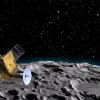 +4 +1
+4 +1Lockheed Martin is building a Moon-to-Earth satellite communications network
If humanity is going to have a long-term presence on the Moon, it's going to need reliable communications — and Lockheed Martin thinks it can provide that link. The company has created a spinoff devoted to lunar infrastructure, Crescent Space, whose first project is a Moon-to-Earth satellite network. Parsec, as it's called, uses a constellation of small lunar satellites to provide a non-stop connection between astronauts, their equipment and the people back home. The system will also provide navigation help.
-
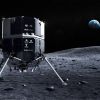 +18 +1
+18 +1Japanese lander enters lunar orbit
A lunar lander developed by Japanese company ispace has entered orbit around the moon, setting up a lunar landing attempt by the end of April. Tokyo-based ispace said that its HAKUTO-R Mission 1 lander entered orbit at 9:24 p.m. Eastern March 20 after a burn by its main engine lasting several minutes. The company did not disclose the parameters of the orbit but said that the maneuver was a success.
-
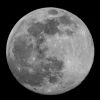 +4 +1
+4 +1UK backs Rolls-Royce project to build a nuclear reactor on the moon
The UK Space Agency said Friday it would back research by Rolls-Royce looking at the use of nuclear power on the moon. In a statement, the government agency said researchers from Rolls-Royce had been working on a Micro-Reactor program “to develop technology that will provide power needed for humans to live and work on the Moon.”
-
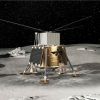 +15 +1
+15 +1NASA selects Firefly Aerospace for mission to moon's far side in 2026
NASA has selected Firefly Aerospace to land payloads on the moon and send another into orbit to provide communications with the lunar far side. The mission will use Texas-based Firefly Aerospace's robotic Blue Ghost lander to safely deliver two payloads to the far side of the moon, which permanently faces away from Earth.
-
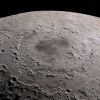 +3 +1
+3 +1Are telescopes on the Moon doomed before they’ve even been built?
For radioastronomers, the far side of the Moon could be the last unspoilt refuge in the Solar System. Planet Earth — and all the human-made electromagnetic noise it spews out into space — stays permanently below the horizon, so that any radio observatories positioned there would be free to observe the cosmos without interference.
-
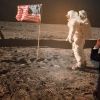 +16 +1
+16 +1NASA's Artemis moon program receives salute from Apollo 11's Buzz Aldrin (video)
The second person to walk on the moon can't wait to see new astronauts follow in his footprints. Buzz Aldrin, one of the astronauts of the Apollo 11 mission of 1969, said Thursday (Feb. 23) he is excited to see NASA land people on the moon again as soon as 2025 with its Artemis program.
Submit a link
Start a discussion
